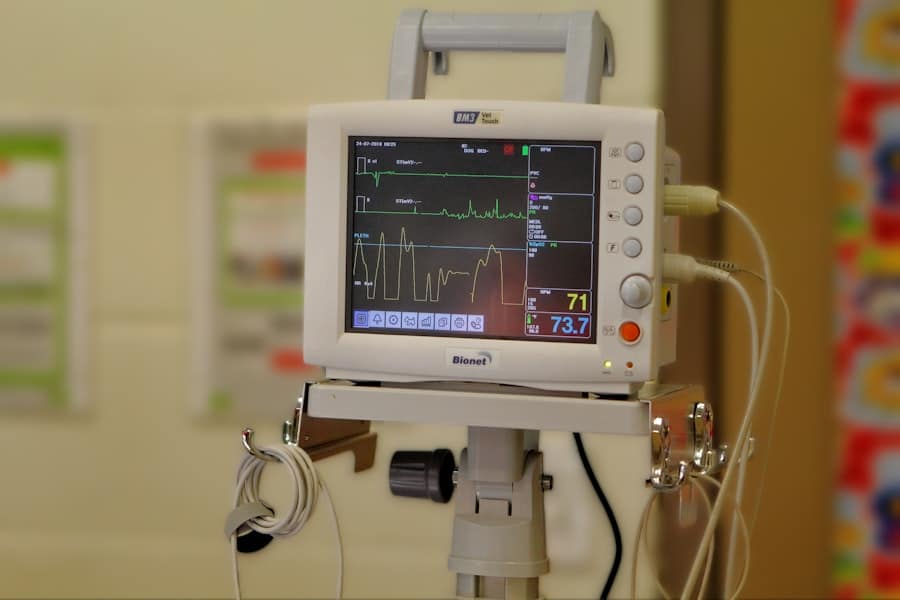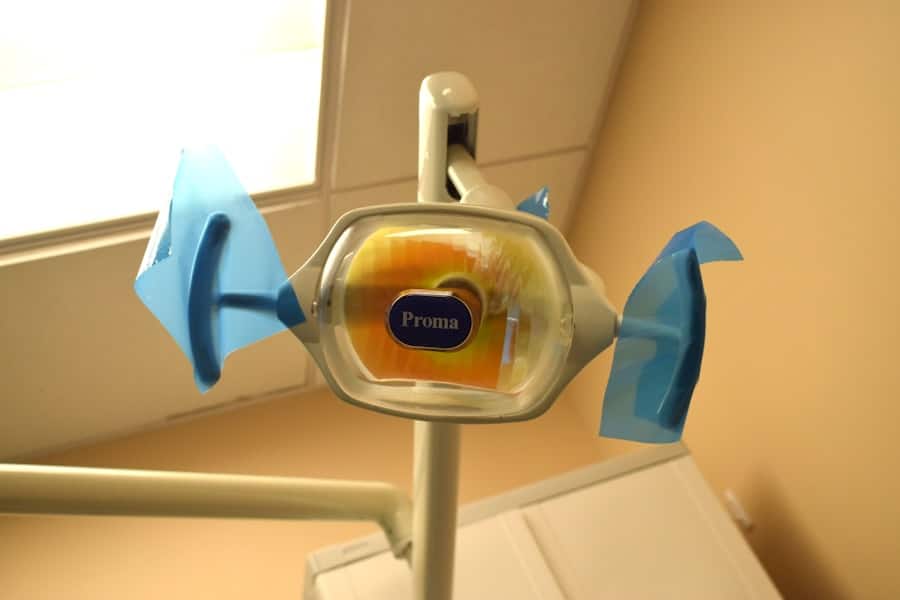The concept of the metaverse has rapidly evolved from a niche digital realm into a multifaceted environment that encompasses various applications, including healthcare simulations. The metaverse, characterized by immersive virtual environments where users can interact with each other and digital objects in real-time, offers unprecedented opportunities for medical training, patient education, and therapeutic interventions. By leveraging advanced technologies such as virtual reality (VR), augmented reality (AR), and artificial intelligence (AI), healthcare professionals can engage in realistic simulations that enhance their skills and knowledge.
This innovative approach not only transforms traditional medical education but also redefines patient care and engagement. Healthcare simulations in the metaverse provide a platform for practitioners to practice clinical skills, make critical decisions, and experience patient interactions in a safe and controlled environment. For instance, medical students can perform virtual surgeries or diagnose complex cases without the risks associated with real-life procedures.
This immersive experience allows learners to make mistakes and learn from them without jeopardizing patient safety. As the healthcare landscape continues to evolve, the integration of metaverse technologies into medical training and patient care is becoming increasingly vital, paving the way for a new era of healthcare delivery.
Key Takeaways
- Healthcare simulations in the metaverse offer immersive, interactive training environments for medical professionals.
- These simulations enhance accessibility and inclusivity, allowing diverse users to participate regardless of location.
- Technological advancements like VR and AI are driving more realistic and effective healthcare training experiences.
- Collaborative opportunities in the metaverse enable multidisciplinary teams to practice and innovate together.
- Addressing challenges such as data privacy and technical limitations is crucial for the future success of healthcare simulations.
Benefits of Using Healthcare Simulations in the Metaverse
One of the most significant advantages of utilizing healthcare simulations in the metaverse is the ability to create highly realistic and interactive training scenarios.
In contrast, metaverse simulations can replicate a wide range of clinical situations, from routine examinations to emergency responses, allowing learners to develop critical thinking and problem-solving skills in a dynamic environment.
For example, a surgical resident can practice a complex procedure multiple times in a virtual setting, gaining confidence and proficiency before stepping into an operating room. Moreover, these simulations can be tailored to meet the specific needs of individual learners or healthcare institutions. Customizable scenarios enable educators to focus on particular skills or knowledge areas that require improvement.
This adaptability not only enhances the learning experience but also ensures that training is relevant and aligned with current medical practices. Additionally, the metaverse allows for real-time feedback and assessment, enabling instructors to monitor progress and provide guidance as needed. This immediate feedback loop is crucial for reinforcing learning and ensuring that healthcare professionals are well-prepared for their roles.
Accessibility and Inclusivity in Healthcare Simulations

Accessibility is a critical consideration in healthcare education, and the metaverse has the potential to bridge gaps that exist in traditional training methods. Geographic barriers often limit access to quality medical education, particularly in rural or underserved areas. By offering virtual simulations, the metaverse can democratize access to training resources, allowing students from diverse backgrounds to participate in high-quality educational experiences regardless of their location.
For instance, a medical student in a remote village can engage in advanced surgical simulations alongside peers from urban centers, fostering collaboration and knowledge exchange. Inclusivity is another essential aspect of healthcare simulations in the metaverse. The platform can accommodate various learning styles and needs, making it easier for individuals with disabilities or different learning preferences to engage with the material.
For example, auditory learners can benefit from narrated scenarios, while visual learners can explore 3D models and interactive elements. Furthermore, the metaverse can provide language support through translation features or localized content, ensuring that non-native speakers can fully participate in simulations. This commitment to inclusivity not only enhances the educational experience but also cultivates a more diverse healthcare workforce capable of addressing the needs of varied patient populations.
Advancements in Technology for Healthcare Simulations
The rapid advancement of technology plays a pivotal role in enhancing healthcare simulations within the metaverse. Virtual reality headsets have become increasingly sophisticated, offering high-resolution graphics and immersive audio that create lifelike environments for users. These advancements allow healthcare professionals to engage in simulations that closely mimic real-life scenarios, from performing intricate surgical procedures to managing patient interactions in emergency situations.
For instance, VR platforms like Oculus Quest and HTC Vive have been adopted by medical schools and training programs to provide students with hands-on experience in a risk-free setting. In addition to VR technology, augmented reality is also making significant strides in healthcare simulations. AR overlays digital information onto the real world, enabling learners to visualize complex anatomical structures or procedural steps while interacting with physical models or patients.
This technology can be particularly beneficial for surgical training, where understanding spatial relationships is crucial. For example, AR applications can project 3D images of organs onto a patient’s body during surgery, guiding surgeons through intricate procedures with enhanced precision. As these technologies continue to evolve, they will further enrich the educational landscape within the metaverse.
Addressing Challenges and Concerns in Healthcare Simulations
Despite the numerous benefits associated with healthcare simulations in the metaverse, several challenges and concerns must be addressed to ensure their effective implementation. One significant issue is the potential for technological barriers that may hinder access for some users. While VR and AR technologies have become more affordable over time, not all institutions or individuals may have the resources necessary to invest in these tools.
Additionally, there may be disparities in internet connectivity that could limit participation in online simulations. To mitigate these challenges, stakeholders must work collaboratively to develop cost-effective solutions and ensure equitable access to technology across diverse populations. Another concern revolves around the ethical implications of using virtual simulations for medical training.
As learners engage in realistic scenarios that involve patient interactions or critical decision-making, there is a risk of desensitization or emotional detachment from real-life situations. It is essential for educators to emphasize the importance of empathy and compassion in patient care while utilizing these simulations. Furthermore, establishing guidelines for ethical conduct within virtual environments will be crucial to maintaining professionalism among healthcare professionals as they navigate these immersive experiences.
Training and Education Opportunities in the Metaverse

The metaverse presents a wealth of training and education opportunities for healthcare professionals at all stages of their careers. For medical students, immersive simulations offer an engaging way to learn foundational concepts and clinical skills before entering clinical rotations. Advanced learners, such as residents and fellows, can benefit from specialized training modules that focus on complex procedures or rare conditions that they may not encounter frequently in their practice.
This tailored approach ensures that all healthcare providers receive comprehensive training that prepares them for real-world challenges. Continuing education is another critical aspect of professional development that can be enhanced through metaverse simulations. Healthcare professionals must stay current with evolving medical practices and technologies; therefore, ongoing training is essential.
The metaverse allows for flexible learning opportunities where practitioners can participate in workshops or refresher courses at their convenience. For example, a busy physician can log into a virtual environment during their downtime to practice new surgical techniques or review updated guidelines on patient management. This flexibility not only supports lifelong learning but also fosters a culture of continuous improvement within the healthcare field.
Collaborative Opportunities in Healthcare Simulations
Collaboration is a cornerstone of effective healthcare delivery, and the metaverse facilitates unprecedented opportunities for teamwork among healthcare professionals. Virtual environments enable interdisciplinary collaboration where practitioners from various specialties can come together to solve complex cases or participate in joint training exercises. For instance, a team of surgeons, anesthesiologists, and nurses can engage in a simulated surgical procedure that requires coordinated efforts from all members to ensure patient safety and optimal outcomes.
This collaborative approach mirrors real-world scenarios where effective communication and teamwork are essential. Moreover, the metaverse allows for global collaboration among healthcare professionals across different regions and countries. Medical experts can share knowledge and best practices through virtual conferences or workshops without the constraints of travel logistics or time zones.
This exchange of ideas fosters innovation and encourages the adoption of new techniques or technologies that can improve patient care worldwide. For example, a surgeon in one country may demonstrate a novel surgical technique to an audience of peers from around the globe through a live-streamed simulation session, promoting cross-border learning and collaboration.
Future Outlook for Healthcare Simulations in the Metaverse
As technology continues to advance at an unprecedented pace, the future outlook for healthcare simulations in the metaverse appears promising. The integration of artificial intelligence into these simulations will likely enhance their realism and adaptability further. AI algorithms can analyze user performance data to provide personalized feedback and recommendations tailored to individual learning needs.
This level of customization will ensure that healthcare professionals receive targeted training that addresses their specific strengths and weaknesses. Additionally, as more institutions recognize the value of metaverse-based training programs, we can expect increased investment in research and development within this field. Collaborative efforts between technology companies, educational institutions, and healthcare organizations will drive innovation and expand the capabilities of virtual simulations.
As these partnerships grow stronger, we may see new applications emerge that address pressing challenges within healthcare delivery—such as improving patient outcomes or enhancing public health initiatives. In conclusion, the integration of healthcare simulations within the metaverse represents a transformative shift in medical education and patient care delivery.
As the healthcare industry increasingly embraces innovative technologies, the rise of healthcare simulations in the Metaverse is becoming a focal point for training and education. For those interested in exploring how technology can enhance learning experiences, a related article on the best free software for translation can provide insights into the tools that facilitate communication and understanding in diverse environments. You can read more about it here: Discover the Best Free Software for Translation Today.
FAQs
What are healthcare simulations in the metaverse?
Healthcare simulations in the metaverse are virtual reality environments where medical professionals and students can practice clinical skills, procedures, and patient interactions in a realistic, immersive digital setting.
Why are healthcare simulations in the metaverse growing in popularity?
They are growing due to advancements in virtual reality technology, the need for safe and cost-effective training methods, increased accessibility for remote learners, and the ability to simulate complex medical scenarios without risk to real patients.
How do healthcare simulations in the metaverse benefit medical training?
They provide hands-on experience, improve clinical decision-making, enhance teamwork and communication skills, allow repeated practice, and offer immediate feedback, all within a controlled and safe environment.
What technologies enable healthcare simulations in the metaverse?
Key technologies include virtual reality (VR) headsets, augmented reality (AR), haptic feedback devices, 3D modeling, artificial intelligence, and cloud computing platforms that support immersive and interactive experiences.
Are healthcare simulations in the metaverse cost-effective?
Yes, while initial setup costs can be high, they reduce long-term expenses by minimizing the need for physical resources, travel, and instructor time, and by decreasing errors in real clinical settings through better training.
Can healthcare simulations in the metaverse replace traditional medical training?
They are generally used to complement, not replace, traditional training methods by providing additional practice opportunities and enhancing learning outcomes.
What challenges exist in implementing healthcare simulations in the metaverse?
Challenges include high development costs, technological barriers, the need for standardized curricula, ensuring realistic scenarios, and addressing privacy and data security concerns.
Who can benefit from healthcare simulations in the metaverse?
Medical students, healthcare professionals, educators, and institutions can all benefit by improving skills, knowledge retention, and patient care quality through immersive training experiences.
Is the use of healthcare simulations in the metaverse supported by research?
Yes, numerous studies have shown that simulation-based training improves clinical skills, confidence, and patient outcomes, and ongoing research continues to validate the effectiveness of metaverse-based simulations.
How accessible are healthcare simulations in the metaverse globally?
Accessibility is increasing as VR technology becomes more affordable and internet connectivity improves worldwide, though disparities still exist in low-resource settings.

